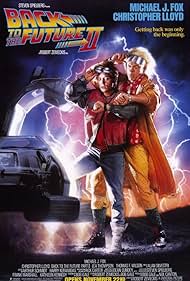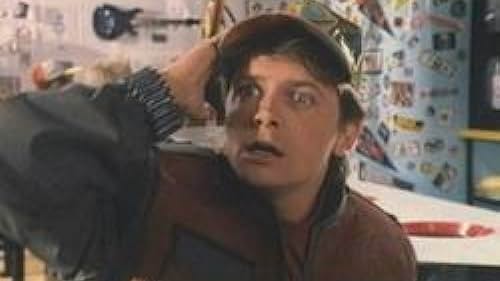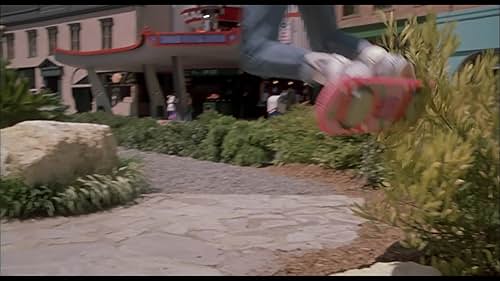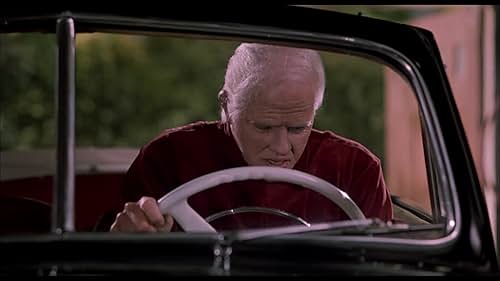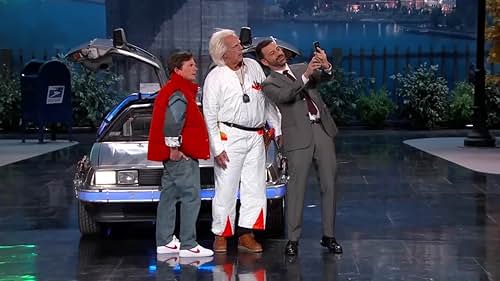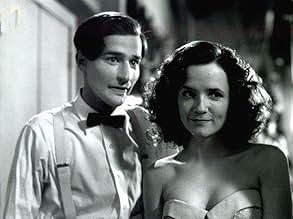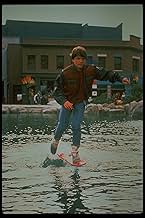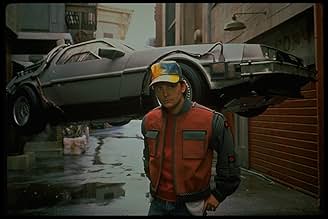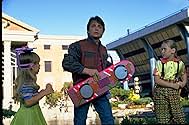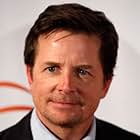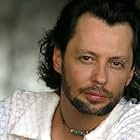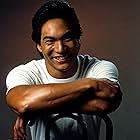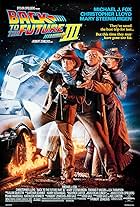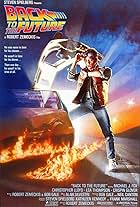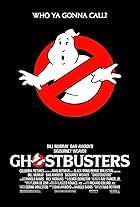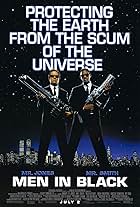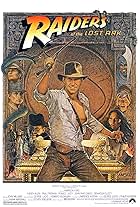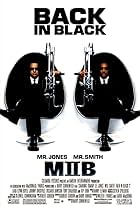After visiting 2015, Marty McFly must repeat his visit to 1955 to prevent disastrous changes to 1985...without interfering with his first trip.After visiting 2015, Marty McFly must repeat his visit to 1955 to prevent disastrous changes to 1985...without interfering with his first trip.After visiting 2015, Marty McFly must repeat his visit to 1955 to prevent disastrous changes to 1985...without interfering with his first trip.
- Nominated for 1 Oscar
- 9 wins & 11 nominations total
Tom Wilson
- Biff Tannen
- (as Thomas F. Wilson)
- …
E'Casanova
- 'Michael Jackson' Video Waiter
- (as E. Casanova Evans)
Storyline
Did you know
- TriviaThe plot line of George McFly being dead in 1985-A was based entirely on Crispin Glover's refusal to do the sequel.
- GoofsWhen old Biff steals the time machine to change the past, he returns the Delorean back to 2015 so Doc and Marty would suspect nothing. He should instead have arrived in the alternate version of 2015 just like Marty and Doc went to the alternate 1985. No explanation is given as to why he can return to the unaltered time-line while Doc and Marty can only get to alternate versions of the time-line. In The Big Bang Theory (2007), the episode The Focus Attenuation (2014), they suggest that this could be because when Old Biff travels forward, Young Biff hasn't made his first bet that starts the time-line changing yet, thus allowing Old Biff to return to the original 2015. Possible explanation: It is implied that Lorraine eventually got totally fed up with her abusive married life, and shot Biff to death sometime within just a few years after the time when Marty saw them in Alternate 1985 (this is the real reason that Old Biff clutches his chest and crumples to the pavement as he is exiting the DeLorean after returning to 2015, not because his aging body couldn't tolerate the physical stresses of time-warping, as most audience-members would have assumed was happening), removing him and his toxically-greedy influence on the Hill Valley area. The logical "further" idea, therefore, is that the decent-hearted Lorraine --- along with 99% of the other locals, who of course would themselves have also strongly disliked the dystopian wasteland that their community had degenerated into --- would then have banded together en masse --- "in numbers, there is strength" --- and ousted whatever "scum of the earth" officials and politically-influential residents were currently present in the area, and then made sweeping changes for the better to get Hill Valley back to being the peaceful bedroom community that it had been before Biff's interference that had started in the late '50's. Also, Hilldale --- where the McFlys were now living --- was quite a distance from Hill Valley, and so it's possible that Biff's dissipative influence hadn't reached that somewhat-geographically-removed area so much as it had affected his own immediate stomping-grounds.
- Crazy creditsThe theatrical version had a teaser for Back to the Future Part III (1990). Some later versions do not have a teaser at all, only showing "To Be Concluded", and skip to the credits. Some have "To Be Concluded" followed by "Back To The Future III". Some cable versions retain the teaser for Back To The Future Part III, but, of course, do not say "Coming Summer 1990". It was, however, added back to the film for its digital download and Blu-Ray versions.
- Alternate versionsSpanish dubbed version also refers to Marty as Levi Strauss instead of Calvin Klein.
- ConnectionsEdited from Back to the Future (1985)
- SoundtracksBeat It
Written and Performed by Michael Jackson
Produced by Quincy Jones (uncredited)
Courtesy of CBS Records, Music Licensing Department
Featured review
It's funny that the plot of 'Back to the Future II' should be based on altering Marty McFly's future. Wasn't Doc the one who was so staunchly opposed to knowing too much about their future, preferring instead to let things take a natural course? 'Destiny!' he called it. But that is exactly what the sequel is all about, Doc's proposal to altar the future. And this leads not only to bad news for Doc Brown and Marty, but for the your Density? I mean, Destiny? (flashback humor).
The story focuses on Marty McFly's future. Picking up right where we left off in the first movie, Doc informs Marty that in the year 2015, Marty's son partakes in some unfortunate activities with Griff (Biff's grandson) that lead to his arrest and incarceration. While in the future to fix up that little mishap (again, messing with 'Destiny'), Marty picks up a sports Almanac to take back with him. The Almanac contains all sports scores since something like 1955 (why it is only the size of a magazine, I don't know, considering it covers major college and pro sporting event for a whole lot of years).
The Doc, in disgust at Marty's foolish get-rich-quick desires, throws the magazine out (while still in 2015). Unfortunately, Biff, now an old man, gets hold of both the magazine and the Delorian and travels to his young self in 1955. This sets off a change of events in the past so that when Marty and the Doc, now in the future, are ready to go back to 1985, suddenly find themselves in an unfamiliar hell. With Biff changing the past, he also changed the future, creating a desolate, alternate 1985. One where Biff is the richest man in Hill Valley, though still the sleaziest. And where a lot of other things have changed as well. Now, Marty and the Doc have to go back to 1955 and get the magazine from Biff if they expect to restore the future and erase the alternative 1985.
This is a great sequel to a great movie. You get the 1989 version of the future (I don't know that 2015 will make the kind of progress we see in the movie with cool flying cars and dehydrating pizzas and hoverboards). This is the special effects and visual beauty of the second, whereas in the first one, it was recreating the past. Marty had to once adapt to 1955, now he has to do the same for 2015, even if only for a moment.
But, it also ties in another creative aspect: when Marty and the Doc must return to 1955, they only know the whereabouts of Biff based on where they last saw him in that year--the school dance and all of that which took place in the first movie. Going back to that past means that a Marty "Calvin Klein" McFly is already there, and the events are taking place again just as we saw them in the first movie. And now, the Marty and the Doc from the future are intermingling once again with their past versions of themselves. So, in essence, the filmmakers had to recreate some of the scenes from the old movie, from different angles, and the actors had to play dual roles (which they do often throughout the trilogy) by being added into those scenes. It was a great special effects/visionary project to undertake, and what makes the series so damned creative and really a fun idea. And here, too, the goal is to avoid running into your past self because, yes, it could altar events once again. I wonder how the future changed since Marty and Doc's intervention in 2015?
So, prepare yourself for what may arguably be the best movie out of the trilogy (probably because you get to see the future and past and everything in between; although, I'm still torn between rating the first or the second as my absolute favorite). It is the continuation of a fun first movie, and keeps up the creativity and novelty. I think that was the reason most responsible for its success: the ability to keep offering something new (although some things, are obviously repeated, like the running gag of Marty blacking out and waking up to some version of his mother informing him of what year it is after he tells her what an awful dream he had).
So, sit back and let the Delorean be your guide.
The story focuses on Marty McFly's future. Picking up right where we left off in the first movie, Doc informs Marty that in the year 2015, Marty's son partakes in some unfortunate activities with Griff (Biff's grandson) that lead to his arrest and incarceration. While in the future to fix up that little mishap (again, messing with 'Destiny'), Marty picks up a sports Almanac to take back with him. The Almanac contains all sports scores since something like 1955 (why it is only the size of a magazine, I don't know, considering it covers major college and pro sporting event for a whole lot of years).
The Doc, in disgust at Marty's foolish get-rich-quick desires, throws the magazine out (while still in 2015). Unfortunately, Biff, now an old man, gets hold of both the magazine and the Delorian and travels to his young self in 1955. This sets off a change of events in the past so that when Marty and the Doc, now in the future, are ready to go back to 1985, suddenly find themselves in an unfamiliar hell. With Biff changing the past, he also changed the future, creating a desolate, alternate 1985. One where Biff is the richest man in Hill Valley, though still the sleaziest. And where a lot of other things have changed as well. Now, Marty and the Doc have to go back to 1955 and get the magazine from Biff if they expect to restore the future and erase the alternative 1985.
This is a great sequel to a great movie. You get the 1989 version of the future (I don't know that 2015 will make the kind of progress we see in the movie with cool flying cars and dehydrating pizzas and hoverboards). This is the special effects and visual beauty of the second, whereas in the first one, it was recreating the past. Marty had to once adapt to 1955, now he has to do the same for 2015, even if only for a moment.
But, it also ties in another creative aspect: when Marty and the Doc must return to 1955, they only know the whereabouts of Biff based on where they last saw him in that year--the school dance and all of that which took place in the first movie. Going back to that past means that a Marty "Calvin Klein" McFly is already there, and the events are taking place again just as we saw them in the first movie. And now, the Marty and the Doc from the future are intermingling once again with their past versions of themselves. So, in essence, the filmmakers had to recreate some of the scenes from the old movie, from different angles, and the actors had to play dual roles (which they do often throughout the trilogy) by being added into those scenes. It was a great special effects/visionary project to undertake, and what makes the series so damned creative and really a fun idea. And here, too, the goal is to avoid running into your past self because, yes, it could altar events once again. I wonder how the future changed since Marty and Doc's intervention in 2015?
So, prepare yourself for what may arguably be the best movie out of the trilogy (probably because you get to see the future and past and everything in between; although, I'm still torn between rating the first or the second as my absolute favorite). It is the continuation of a fun first movie, and keeps up the creativity and novelty. I think that was the reason most responsible for its success: the ability to keep offering something new (although some things, are obviously repeated, like the running gag of Marty blacking out and waking up to some version of his mother informing him of what year it is after he tells her what an awful dream he had).
So, sit back and let the Delorean be your guide.
- vertigo_14
- Sep 22, 2004
- Permalink
- How long is Back to the Future Part II?Powered by Alexa
Details
- Release date
- Country of origin
- Official sites
- Language
- Also known as
- Volver al futuro II
- Filming locations
- Production companies
- See more company credits at IMDbPro
Box office
- Budget
- $40,000,000 (estimated)
- Gross US & Canada
- $119,000,002
- Opening weekend US & Canada
- $27,835,125
- Nov 26, 1989
- Gross worldwide
- $332,500,002
- Runtime1 hour 48 minutes
- Color
- Sound mix
- Aspect ratio
- 1.85 : 1
Contribute to this page
Suggest an edit or add missing content
